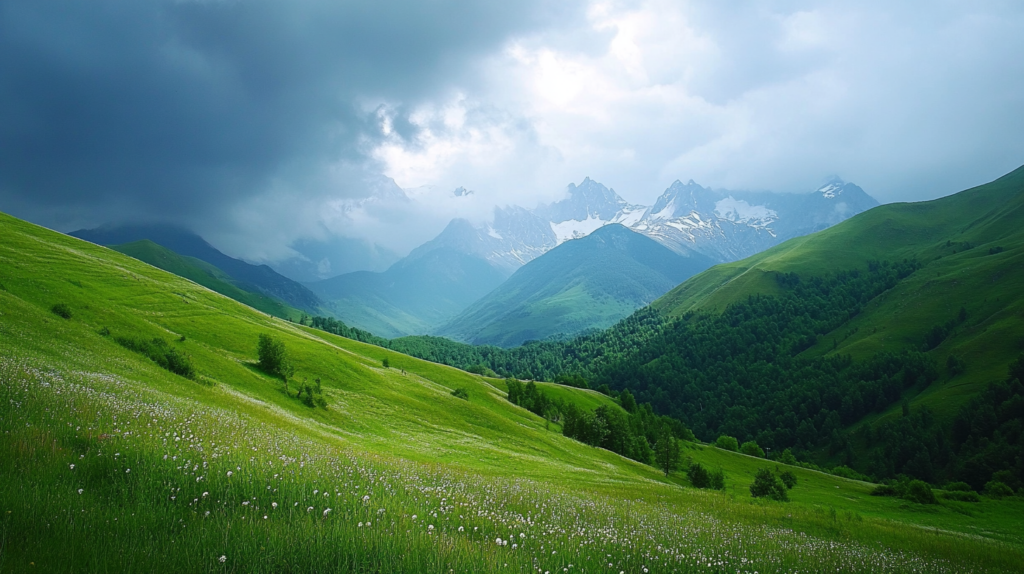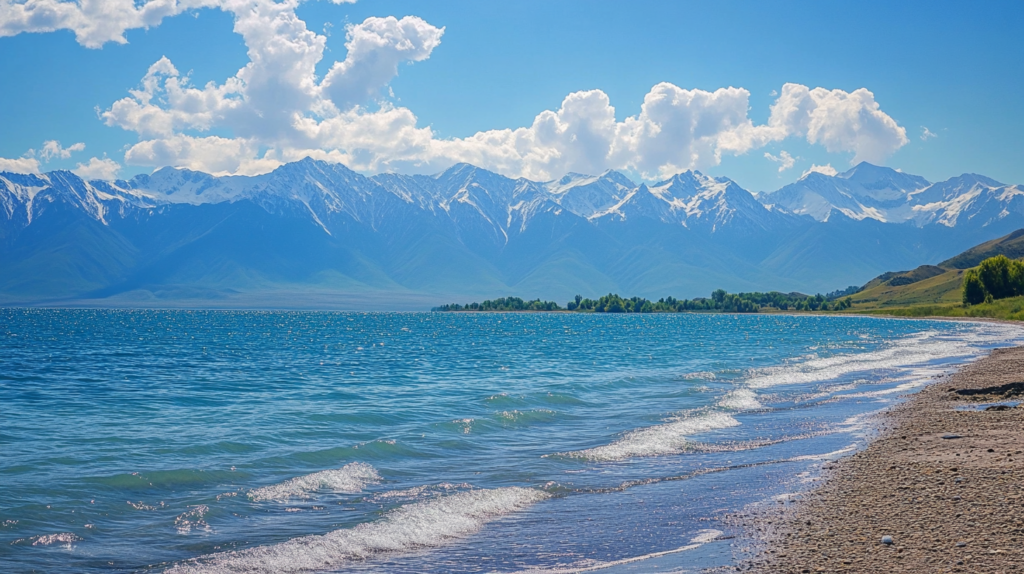Kyrgyzstan is a mountainous country located in the heart of Central Asia, covering an area of approximately 199,951 km². Though landlocked, its natural wealth attracts tourists from all over the world. The country shares borders with Kazakhstan to the north, Uzbekistan to the west, Tajikistan to the south, and China to the east.
Mountains dominate Kyrgyzstan, covering about 90% of its territory. The Tian Shan is the largest mountain range, stretching across the eastern and central parts of the country, while the Pamir ranges extend in the southwest. The nation’s highest point, Victory Peak (7,439 m), located on the border with China, proudly towers over the region. Fertile valleys, such as Chui, Talas, and Fergana, lie between these majestic ranges, providing ideal conditions for agriculture.
Visitors often say, “If you’ve been to Kyrgyzstan, Switzerland will not surprise you.” Kyrgyzstan’s natural beauty and landscapes are frequently compared to the Swiss Alps. One of the country’s crown jewels is Lake Issyk-Kul, one of the largest high-altitude lakes in the world, situated at 1,607 meters above sea level. This unique lake never freezes, even in winter. Its cool summer breezes make it a perfect retreat, while winters here are milder compared to Bishkek. Issyk-Kul symbolizes Kyrgyzstan’s natural charm, attracting thousands of tourists with its pristine waters, surrounding mountains, and unique ecosystem.
The views from windows in Kyrgyzstan are worth a special mention. Almost anywhere in the country, you can enjoy breathtaking mountain vistas that form a picturesque backdrop to daily life. Just 20–30 minutes from Bishkek, you can find yourself on incredible mountain trails, surrounded by the tranquility and grandeur of nature.

The country’s sharply continental climate adds to its uniqueness for both living and tourism. Significant variations in altitude create diverse weather conditions across the regions.
Regional Climate Differences
The north and south of Kyrgyzstan experience contrasting climates. Northern areas, such as the Chui region and Bishkek, have a milder and more balanced climate, offering all four seasons: hot summers, golden autumns, snowy winters, and blooming springs. In the southern regions, like Naryn, winters are harsher with severe frosts, influencing even the diet of locals, which becomes more calorie-rich to combat the cold.
Sunny Days and Comfortable Weather
Kyrgyzstan is one of the sunniest countries in the region, with an average of 250 sunny days a year, making it an appealing destination for living and traveling. Temperatures are generally moderate: summers are warm but not excessively hot, and winters are cold but without extreme frosts in the lowlands.
Issyk-Kul: The Jewel of Nature
Issyk-Kul deserves special recognition, not just as a major tourist attraction but as a symbol of the country’s pleasant climate. Summers at the lake are cooler than other regions due to its moderating influence, and winters are relatively mild. The lake’s natural beauty and ideal climate make it a perfect destination for relaxation and inspiration.
Kyrgyzstan truly boasts a unique harmony of natural riches and comfortable weather, attracting those who seek stunning landscapes, mild conditions, and unforgettable experiences.

